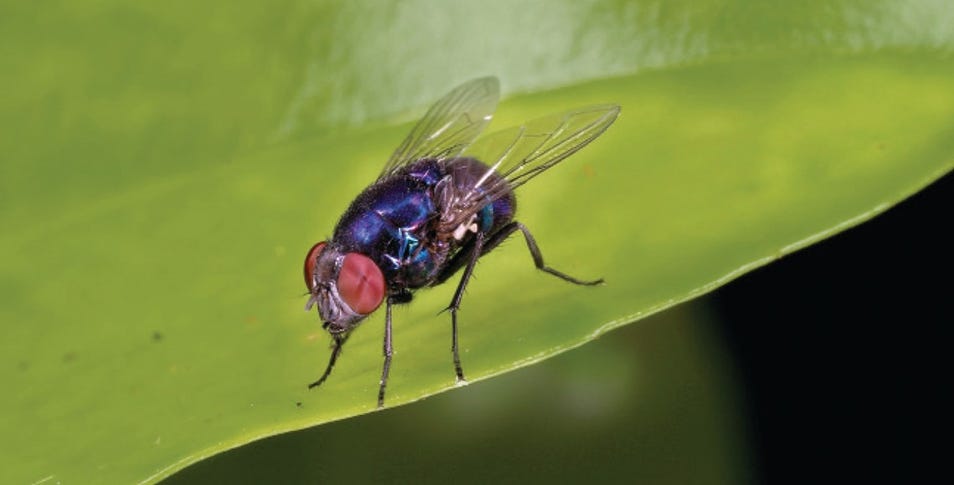EXPERT ADVICE
“When the weather gets cool, the cockroaches are much less active,” says Smith. “They almost go dormant, even though they don’t necessarily die out.”

Diptera witness an entire lifecycle (metamorphosis) from the egg to larva to pupa to adult. Dipetra has membranous forewings and its hind wings are reduced to small, club-shaped halters. Its head consist of modified sucking and in certain cases piercing mouthparts, big compound eyes and generally very short simple antennae. The legs of Diptera are often long with five-segmented tarsi. Larvae looks like typical maggots with no true legs and extremely reduced heads.
It is possible for you to get confused between flies and other few insects which have one pair of wings, for instance, certain male scale insects (Hemiptera) and some mayflies (Ephemeroptera). But, flies are the only insects that have hindwing halteres. Some flies are also good look alike of wasps. These two can be easily distinguished once you hold them as flies have only two wings whereas wasps have four.
The larva of a fly is defined as a Maggot. It is used in forensic science/entomology on a corpse to figure out the time of death. They are also useful as a bio-medical tool when it comes to wound care and treatment.
Some Common Types of Flies:
Moth Flies (Family Psychodidae)
They thrive in damp spaces and at least one species can be commonly found in bathrooms. Larvae survive on decomposing organic matter near water or even in dung. They are sometimes termed as sand flies and can carry diseases.
Fruit Flies (Family Tephritidae)
Majority of the species of fruit flies have light brown with yellow markings. The Mango Fly is considered as the main culprit behind crop damage in India. They are the main reason behind 27 per cent of harvesting loss. Majority of the fruit fly larvae feed on fruit, but others survive on rotting wood, plant stems and the flower heads of daisies.
House Flies (Family Muscidae)
House flies survive on liquid and semiliquid substances apart from solid material that has been softened by vomit or saliva. Because of their high appetite, they tend to deposit feces constantly, one of the major factors that makes the insect a hazardous carrier of pathogens. House flies have the ability to carry over 100 pathogens, such as the one causing typhoid, salmonellosis, cholera, bacillary dysentery, tuberculosis, anthrax, parasitic worms and ophthalmia.
“When the weather gets cool, the cockroaches are much less active,” says Smith. “They almost go dormant, even though they don’t necessarily die out.”
Flies taste things with their feet. They walk over all kinds of rotting foods and plants, collecting germs as they go. This is where flies pose a health hazard; flies can carry bacteria and spread all kinds of horrible diseases to us humans.